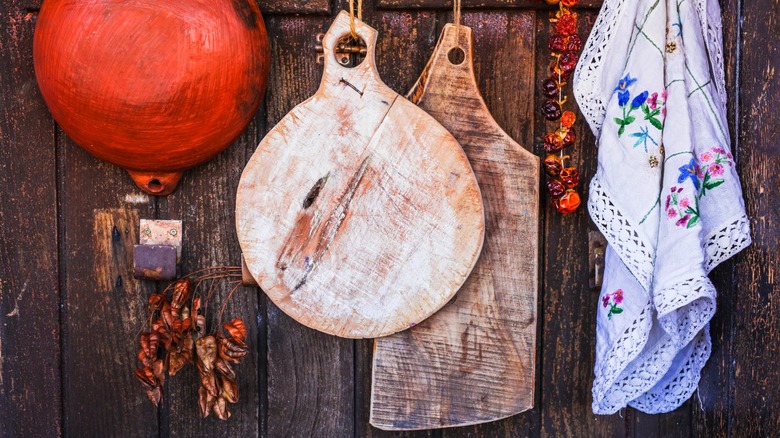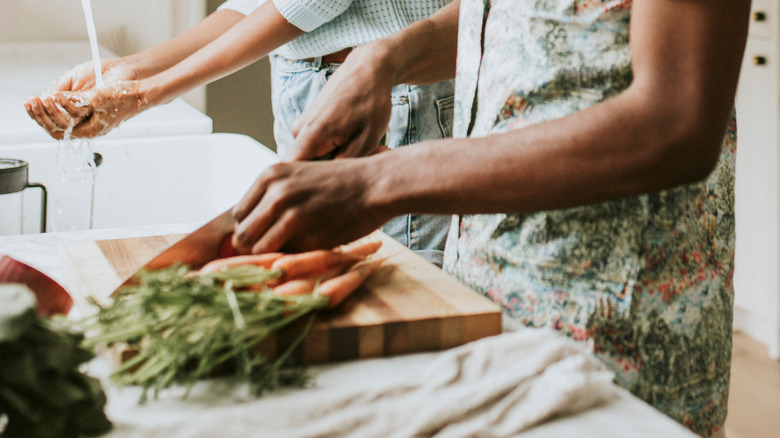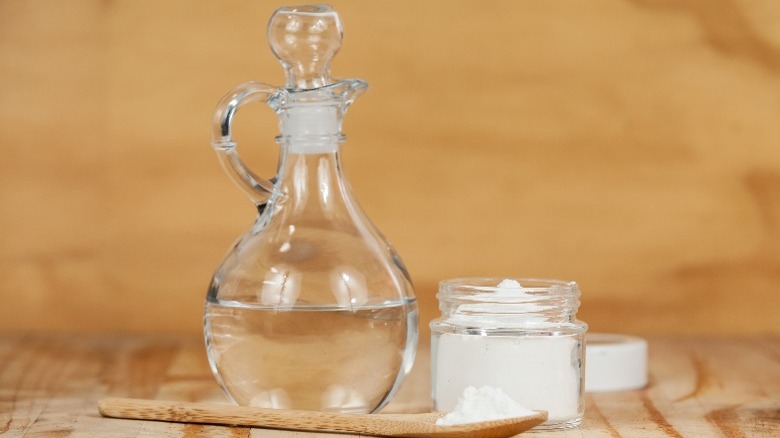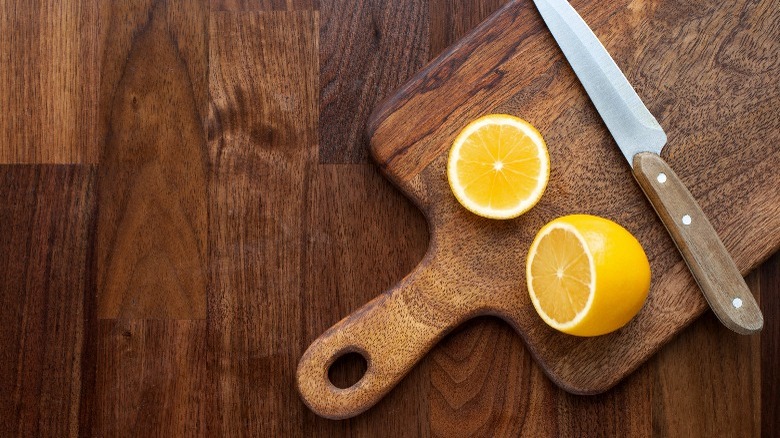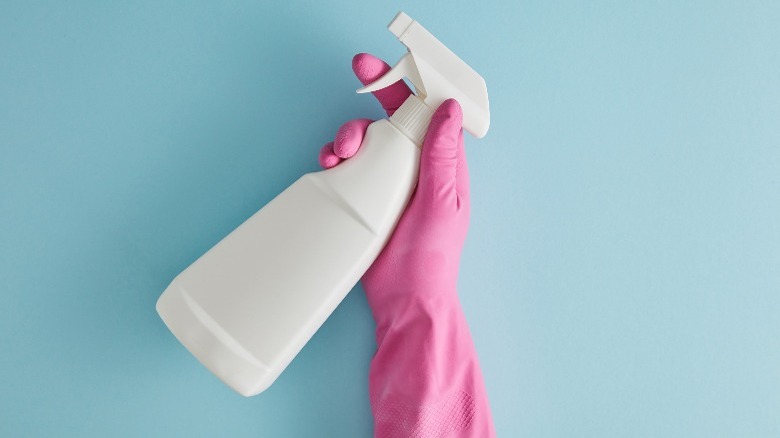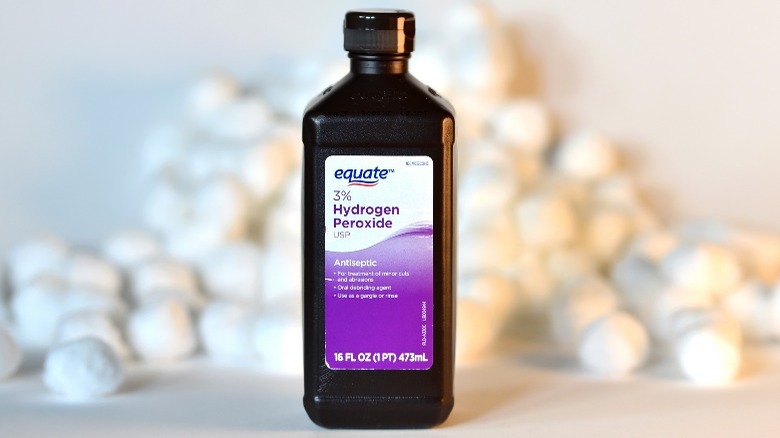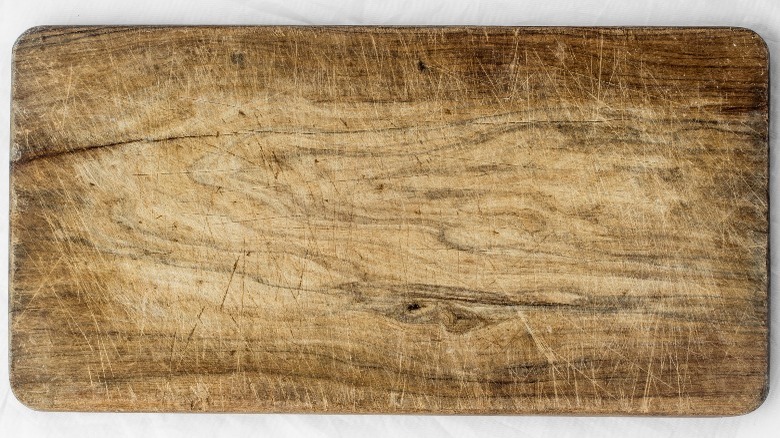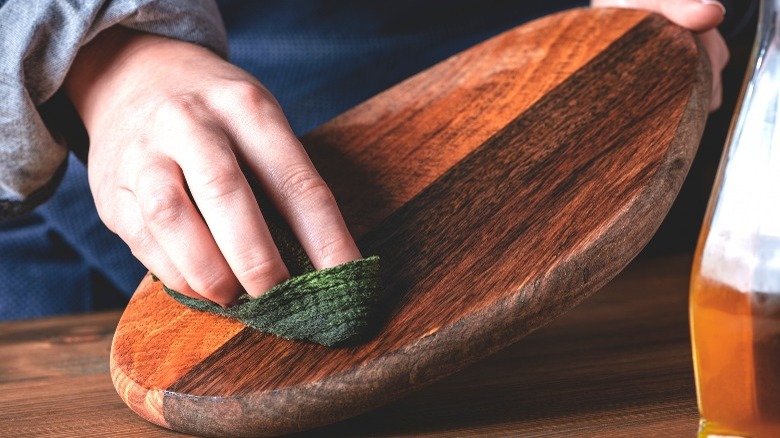How To Best Clean A Wooden Cutting Board
The right equipment can make work in the kitchen easier and more efficient, giving you more time to enjoy whatever you cook up. To that end, a wooden cutting board is a kitchen staple, and if you've never had one before it may even become your new favorite kitchen tool! Versatile, durable and reliable, they are available in many types of wood in a wide variety of shapes and sizes, ensuring you'll be able to find one you love. Additionally, a wooden cutting board can be as beautiful as it is useful, whether used to serve cheese and crackers, or on display in your kitchen. Over time, the wood will develop a rich patina that will reflect it's unique usage, adding character to any kitchen. With proper cleaning techniques and regular maintenance, you can keep it looking its best for each and every occasion.
Though they do range in price, wooden cutting boards generally tend to be on the expensive side, especially handcrafted and high-end boards. The investment is worth it, however, as a high-quality, well-cared for wooden cutting board can last between 5 to 10 years, or even more, according to Wood Cutting Board Store. Regardless of the initial cost, you'll want to take good care of your board to best enjoy its usefulness and extend its life. Read on to find out how best to clean your wooden cutting board, plus learn a few extra facts and important tips!
Wood or plastic?
If you don't already have a wooden cutting board, you should consider whether it will be appropriate for your particular needs. There are a few advantages and disadvantages, especially when compared to other materials. Plastic is a popular choice, and just the fraction of the cost of a wooden cutting board. No option is perfect, however, and to be well-equipped in the kitchen you may want to own at least one of each. For instance, plastic is recommended over wood to cut meat, fish, and poultry. Epicurious advises that wood is more porous than plastic and thus more likely to trap bacteria if it is not cleaned and sanitized correctly. While you can sanitize after each use, this will dry the wood out. In addition, plastic is more resistant to the harsher chemicals needed to sanitize after cutting meat.
For all other foods, wood is actually safer than plastic. Wood is harder and less susceptible to knife scratches where bacteria can accumulate. Furthermore, microorganisms remain on the plastic surface during use, increasing the risk of contamination. Real Simple explains that if your wooden cutting board is properly cleaned and cared for, the bacteria is instead absorbed deep into the grain where it will eventually die off. Plastic and wooden cutting boards have their weaknesses, but if you have both and use each as intended you can keep your kitchen spic and span. Read on to learn how to best clean and care for your wooden cutting board!
Dish soap and water
You should wash your cutting board after each use to best maintain it for the long term. The best method for regular cleaning is to use dish soap and hot water to hand wash your cutting board, as you would wash most other dishes or kitchen utensils. Use a clean sponge or soft bristle brush to scrub away any food stains or debris, and rinse in hot water until all the soap bubbles have dissipated. The New York Times advises readers to wash both sides and all edges to get a thorough clean and avoid uneven drying, which can warp the board. Dry as much as possible with a clean dishtowel, and set upright to air out completely on your drying rack.
Daily cleaning of your cutting board is relatively simple, but each step has a purpose and it's important not to skip or rush through any one of them. As you read on, you'll learn about other methods to clean your cutting board, but soap and hot water is the best option for regular, daily cleaning of your board. While you may occasionally need the cleaning power of other products to get rid of particularly tough odors or stains, stronger formulas can dry your board out if used daily.
Vinegar
If you've already washed your cutting board with soap and hot water, but notice some lingering smells, it may be time to try a new cleaning technique. If you've ever used vinegar for cleaning, you already know it is an excellent, non-toxic option for removing strong odors. To make a vinegar cleaning solution, mix one part white vinegar with three parts warm water, per The New York Times. It's a good idea to make a large batch of the mixture and fill a spray bottle that can be kept by the kitchen sink for easy access and regular cleaning.
While pure white vinegar has a low pH that can kill some germs and bacteria, it isn't strong enough to be used to sanitize, and the EPA does not consider white vinegar a disinfectant capable of killing the required 99.9% of bacteria. It is however, excellent to remove odors or stains when used after sanitizing with soap and water. If your cutting board has picked up some particularly strong odors, you can try mixing vinegar with other ingredients to boost its deodorizing power. CuttingBoard.com recommends a 1:1 mixture of vinegar and baking soda for your wooden cutting board. The mixture will fizz as it works, so you'll know to rinse your board in hot water once the fizzing sound stops.
Lemon and salt
Let's say you've washed your wooden board, used vinegar to eliminate any strong odors, but there are still stains visible. Disappointing for sure, but not at all a hopeless problem. According to Epicurious, all you need are some kitchen staples: a lemon, and kosher salt. To remove stains, sprinkle a generous amount of kosher salt on your wooden cutting board. Slice a whole lemon in half, and use it like a sponge to scrub the salt on the surface of your board. Squeeze gently as you scrub to release more of the lemon juice. Allow the solution to sit for a few minutes before rinsing the board thoroughly with warm water. Dry with a clean dish towel, and set upright.
This method is entirely natural, and can even save you a trip to the store if you've unexpectedly run out of dish soap. It also works well to eliminate strong odors from pungent foods, and leaves a clean citrus scent. It should be noted, however, that although lemon and salt can be used to clean and deodorize your wooden cutting board, it is not powerful enough to kill bacteria and other microorganisms. To avoid contamination or food borne illness, this suggestion should be used in conjunction with one of the stronger disinfecting methods listed in this article.
Bleach
If soap and water just aren't cutting it, you may want to try a stronger solution for cleaning your board. The USDA suggests sanitizing your wooden cutting board with bleach. The high pH in bleach is capable of killing germs and bacteria that soap and water may have missed. While it's not recommended, if you do happen to use your cutting board to cut meat, poultry, fish, or other animal products, be sure to use bleach afterwards to completely disinfect and reduce the risk of food-borne illness.
As a precautionary step, you should wear gloves when handling bleach and take care to avoid any accidental contact with skin, mouth, and eyes. When ready, mix a solution of 1 teaspoon of scent-free, liquid chlorine bleach with a gallon of hot water. Soak a clean dishrag or paper towel in the solution, and thoroughly wipe the board down. Let the bleach sit for no more than five minutes. After a rinse in warm water, dry the board as fully as possible with a clean dishrag before setting upright. While this method will clean the most thoroughly, it may cause your cutting board to dry out or lose its color. To protect your board, oil the wood after each bleach cleaning in order to restore its natural shine.
Hydrogen peroxide
While bleach has incredible disinfecting power, it also has a strong, unpleasant smell, and can be too drying to use on your board every day. If you're not keen on using bleach, you can also use hydrogen peroxide to sanitize your cutting board, as HGTV suggests. Hydrogen peroxide is often used as an alternative to bleach, as it is safer for humans and the natural world. It has bleaching power to whiten and remove difficult stains, without the toxicity to the environment or harsh smell of concentrated bleach.
A 3% hydrogen peroxide is strong enough to kill harmful bacteria, fungi, and viruses that may have come in contact with your cutting board, and it can be found at your local grocery or drugstore. Use a clean sponge to spread the 3% hydrogen peroxide solution over the surface of your board, and let it sit for a few minutes. You'll be able to hear the solution fizz as the tiny bubbles clean deep into any grooves. Once the solution has stopped fizzing, rinse the board in hot water and towel it dry before storing upright.
Mistakes to avoid
While it's important to remember all the steps to take care of your cutting board, there are also specific things you should be sure not to do as well. Regular oiling will keep the wood adequately hydrated, but to maintain this you have to avoid both soaking the board or letting it dry out too much. Frequent washings with excessively strong or otherwise inappropriate cleaning products can dry out your board, as can infrequent re-oiling. A dry board is then likely to crack, which can be unsightly if it doesn't entirely ruin the piece. Deep cracks can also accumulate water or harmful bacteria, warns HuffPost.
Another mistake to avoid is washing your wooden cutting board in the dishwasher, per Bob Vila. In addition to wetting the wood longer than necessary, the washing cycle uses high heat that could warp or otherwise damage the board. Soaking the board leaves it susceptible to developing mildew, which is difficult to completely eradicate and likely means the end of your cutting board. Each time you hand wash your cutting board, regardless of the method you use, towel dry your board before placing it upright on the dish rack. If allowed to drip dry, mildew can form along the edge of the board where the water pools.
Care and maintenance
The most important step to extend the life of your wooden cutting board is to oil it regularly. The oil protects the board by soaking into the wood grain and repelling water. Regular oiling will also keep the board from drying out and cracking, which can create difficult to clean fractures where bacteria can accumulate. How frequently you oil your board will depends on a few factors: how often it's used and what for, how it's cleaned, and the type of wood it's made from. Many cutting boards come with specific care and maintenance instructions, but if yours does not, oiling every three to four weeks is a good rule of thumb. Apply some oil onto a clean rag and spread with the grain. When the entire board is coated, let it sit for at least two hours to soak deeper into the wood. Repeat until the board is completely saturated, and then wipe away excess oil with a cloth.
According to CuttingBoard.com, the type of oil you use is significant. Mineral oil is recommended, and should not be substituted with just any other oil. Other, natural oils such as coconut or olive oil contain fats that will eventually spoil and ruin your cutting board with rancid odor. Mineral oil is odorless, non-toxic, inexpensive, food-safe, and can be found at your local drug store, making it an excellent and accessible choice for keeping your cutting board working and looking its very best.
